12th Grade Gender Wage Gap
What Should be Done About the Gender Wage Gap?
Download Entire Inquiry Here
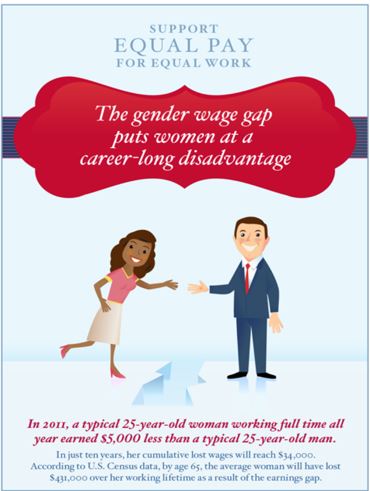
What Should be Done About the Gender Wage Gap?
Download Entire Inquiry Here
Staging the Compelling Question
Source A: Presidential proclamation of National Equal Pay Day April 7, 2014
Source A: Presidential proclamation of National Equal Pay Day April 7, 2014
- Public domain. http://www.whitehouse.gov/the-press-office/2014/04/07/presidential-proclamation-national-equal-pay-day-2014
Source B: Carrie Lukas, opinion piece about the gender wage gap, “It’s Time That We End the Equal Pay Myth,” Forbes.com, April 16, 2012
- Copyright © 2012 Forbes, Inc. Used with permission.
Supporting Question 1- What are the challenges in accurately calculating the gender wave gap?
- Source A: Sarah Jane Glynn, report from the Center for American Progress, Explaining the Gender Wage Gap (excerpt), May 19, 2014 Copyright © 2014 Center for American Progress. Used with permission.
- Source B: Image bank: Graphs and tables depicting the gender wage gap, 1974–2013
Copyright © 2013 Pew Research Center. Used with permission.
Table 3: Gender Wage Gap by the 20 Most Common Occupations for Women
"The Gender Wage Gap by Occupation 2013 and by Race and Ethnicity” Fact Sheet by Ariane Hegewisch and Stephanie Keller Hudiburg. Copyright © 2014 Institute for Women's Policy Research. Used with permission.
http://www.iwpr.org/publications/pubs/the-gender-wage-gap-by-occupation-and-by-race-and-ethnicity-2013.
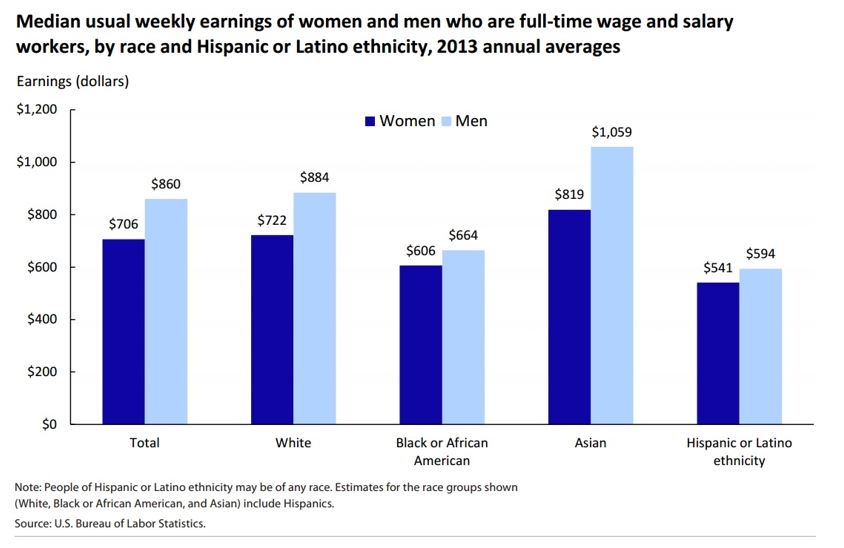
"The Gender Wage Gap by Occupation 2013 and by Race and Ethnicity” Fact Sheet by Ariane Hegewisch and Stephanie Keller Hudiburg. Copyright © 2014 Institute for Women's Policy Research. Used with permission.
http://www.iwpr.org/publications/pubs/the-gender-wage-gap-by-occupation-and-by-race-and-ethnicity-2013.
Graph 4: Gender Wage Gap by Race/Ethnicity and Gender: Weekly Earnings
Bureau of Labor and Statistics. Public Domain. http://www.bls.gov/opub/reports/cps/highlights-of-womens-earnings-in-2013.pdf.
Bureau of Labor and Statistics. Public Domain. http://www.bls.gov/opub/reports/cps/highlights-of-womens-earnings-in-2013.pdf.
Supporting Question 2- Why has the gender wage gap changed over time?
Source A: Ariane Hegewisch and Heidi Hartmann, graph depicting the relationship between male and female earnings, “Gender Earnings Ratio, 1955-2013, Full-Time Workers,” The Gender Wage Gap: 2013, an Institute for Women’s Policy Research fact sheet, September 2014
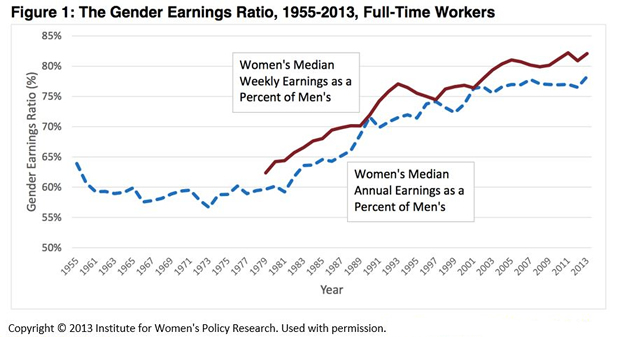

Source B: Francine D. Blau and Lawrence M. Kahn, article describing the gender pay gap, “The Gender Pay Gap: Have Women Gone as Far as They Can?” (excerpt), Academy of Management Perspectives, 2007, vol. 21, no. 1, pp. 7–23. Copyright © 2007 Academy of Management. Used with permission. https://web.stanford.edu/group/scspi/_media/pdf/key_issues/gender_research.pdf.
Source C: Claudia Goldin “The Quiet Revolution That Transformed Women’s Employment, Education, and Family” (excerpts), Richard T. Ely Lecture delivered at the American Economics Association Annual Meeting, 2006 Published in American Economic Review 96, no. 2 (2006): 1–21. Copyright © 2006 Claudia Goldin. Used with permission. http://scholar.harvard.edu/files/goldin/files/the_quiet_revolution_that_transformed_womens_employment_education_and_family.pdf
Source C: Claudia Goldin “The Quiet Revolution That Transformed Women’s Employment, Education, and Family” (excerpts), Richard T. Ely Lecture delivered at the American Economics Association Annual Meeting, 2006 Published in American Economic Review 96, no. 2 (2006): 1–21. Copyright © 2006 Claudia Goldin. Used with permission. http://scholar.harvard.edu/files/goldin/files/the_quiet_revolution_that_transformed_womens_employment_education_and_family.pdf
Supporting Question 3- Where is the gender wage gap the most pronounced?
Source A: Image bank: Graphs showing demographic data on the gender wage gap from Breadwinner Moms, a report from the Pew Research Center, 2013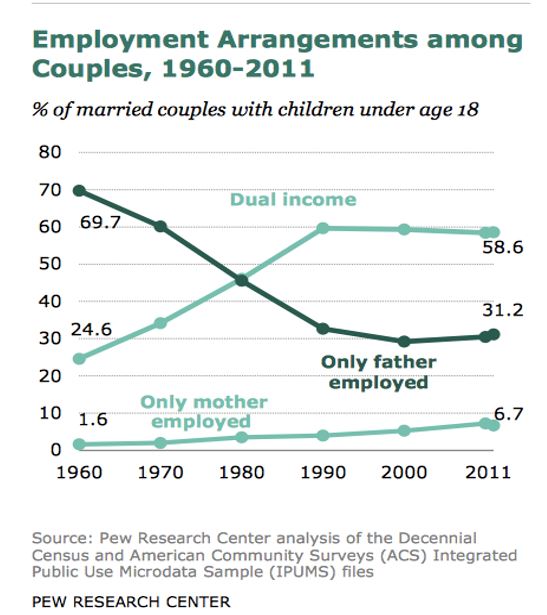
Graph 1: Employment Arrangements among Couples, 1960-2011
Copyright © 2012 Pew Research. Used with permission.
Copyright © 2012 Pew Research. Used with permission.
Graph 2: Mother as the Sole or Primary Provider: 1960-2011
Copyright © 2012 Pew Research. Used with permission.
Copyright © 2012 Pew Research. Used with permission.
Graph 3: Family Income of Two Types of Single Mothers
Copyright © 2012 Pew Research. Used with permission.
Copyright © 2012 Pew Research. Used with permission.
Graph 4: Mothers are Increasingly More Educated than Fathers
Copyright © 2014 Pew Research. Used with permission.
Copyright © 2014 Pew Research. Used with permission.
Source B: United State Census, “Women’s Pay as a Percentage of Men’s Pay,” chart depicting the relationship between men’s and women’s pay, 2014
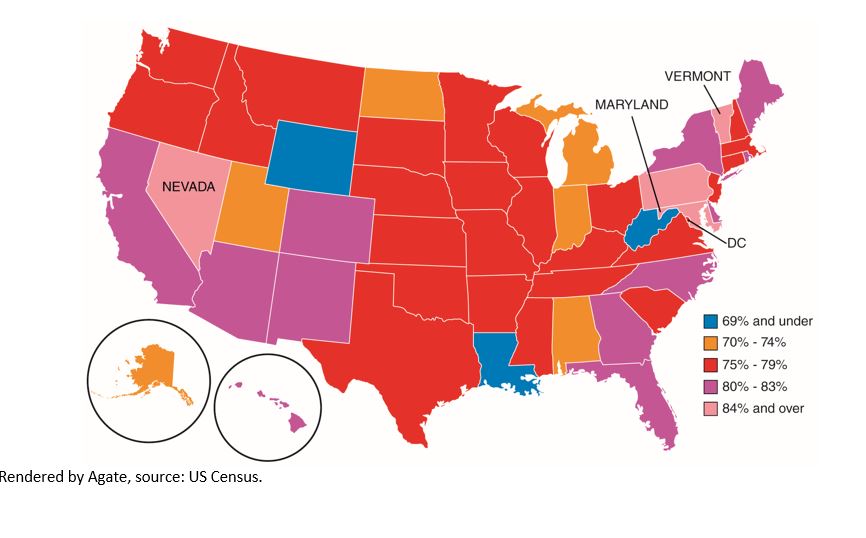
Source C: American Association of University Women, table showing median earnings of men and women based on New York congressional districts from “The Gender Pay Gap: New York,” September 2014
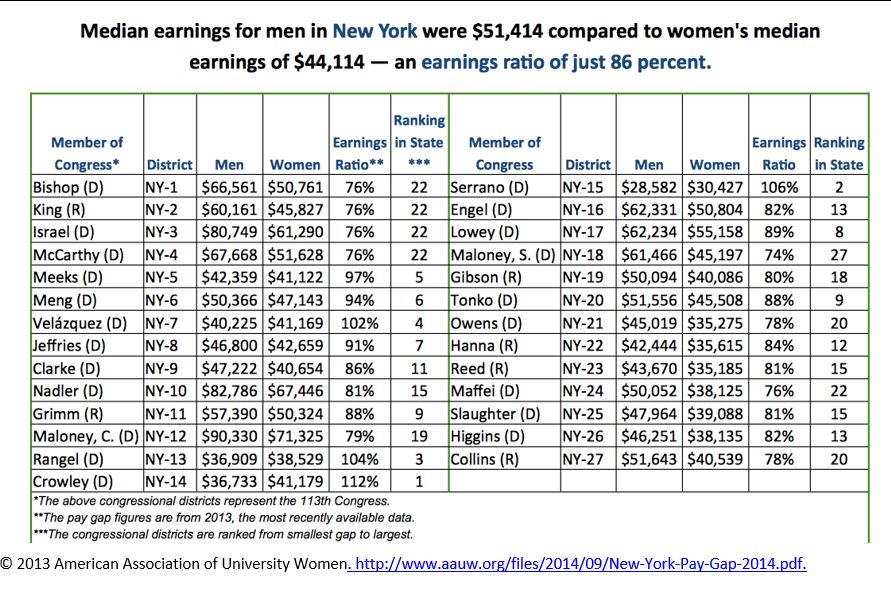
Supporting Question 4- Is there a political solution to the gender wage gap?
Source A: Multiple authors, debate over the paycheck fairness act, “Should the Senate Pass the Paycheck Fairness Act?,” Debate Club feature, U.S. News & World Report, May 4, 2012 Copyright © 2012 U.S. News & World Report. Used with permission. http://www.usnews.com/debate-club/should-the-senate-pass-the-paycheck-fairness-act.
Source B: Katherine Gallagher Robbins and Julie Vogtman, report on women’s pay from the National Women’s Law Center, “Higher State Minimum Wages Promote Fair Pay for Women,” September 2013
Source B: Katherine Gallagher Robbins and Julie Vogtman, report on women’s pay from the National Women’s Law Center, “Higher State Minimum Wages Promote Fair Pay for Women,” September 2013
Copyright © 2013 National Women’s Law Center. Used with permission. http://www.nwlc.org/sites/default/files/pdfs/minimumwageandwagegap.pdf.
Appendix B: Additional Resources for Teaching this Inquiry
Appendix B: Additional Resources for Teaching this Inquiry
Books
- Francine D. Blau, Marianne A. Ferber, and Anne L. Winkler, The Economics of Women, Men, and Work,
7th ed. Upper Saddle River, NJ: Prentice Hall, 2013. - Thomas A. Diprete and Claudia Buchmann, The Rise of Women: The Growing Gender Gap in Education and What It Means for American Schools. New York, NY: Russell Sage Foundation, 2013.
- Claudia Goldin, Understanding the Gender Gap: An Economic History of American Women. New York, NY: Oxford University Press, 1990.
- Diana E. Hess, Controversy in the Classroom: The Democratic Power of Discussion. New York, NY: Routledge, 2009.
Articles
- Francine D. Blau and Lawrence M. Kahn. “Rising Wage Inequity and the U.S. Gender Gap.” The American Economic Review 84, no. 2 (1994): 23–28. http://www.jstor.org/discover/10.2307/2117795?sid=21105735703503&uid=2&uid=3739664&uid=3739256&uid=4.
- Doris Weichselbaumer and Rudolf Winter-Ebmer, “Meta-Analysis of the International Gender Wage Gap.” Journal of Economic Surveys 19, no. 3 (2009): 1–29. http://www.ihs.ac.at/publications/eco/es-143.pdf
Websites
- Ariane Hegewisch and Stephanie Keller Hudiburg, “The Gender Wage Gap by Occupation 2013 and by Race and Ethnicity” Fact Sheet. Institute for Women’s Policy Research, April 2014, http://www.iwpr.org/publications/pubs/the-gender-wage-gap-by-occupation-and-by-race-and-ethnicity-2013.
- Wendy Wang, Kim Parker, and Paul Taylor. Breadwinner Moms: Mothers Are the Sole or Primary Provider in Four-in-Ten Households with Children; Public Conflicted about the Growing Trend. Washington, DC: Pew Research Center, 2014.
- The Simple Truth about the Gender Wage Gap, 2014 Fall edition. American Association of University Women.